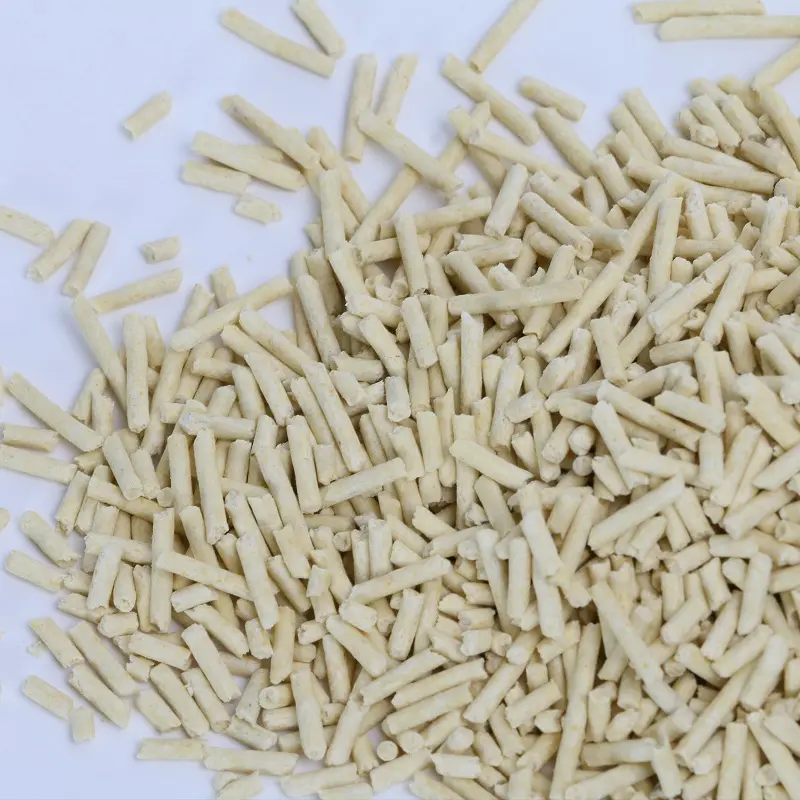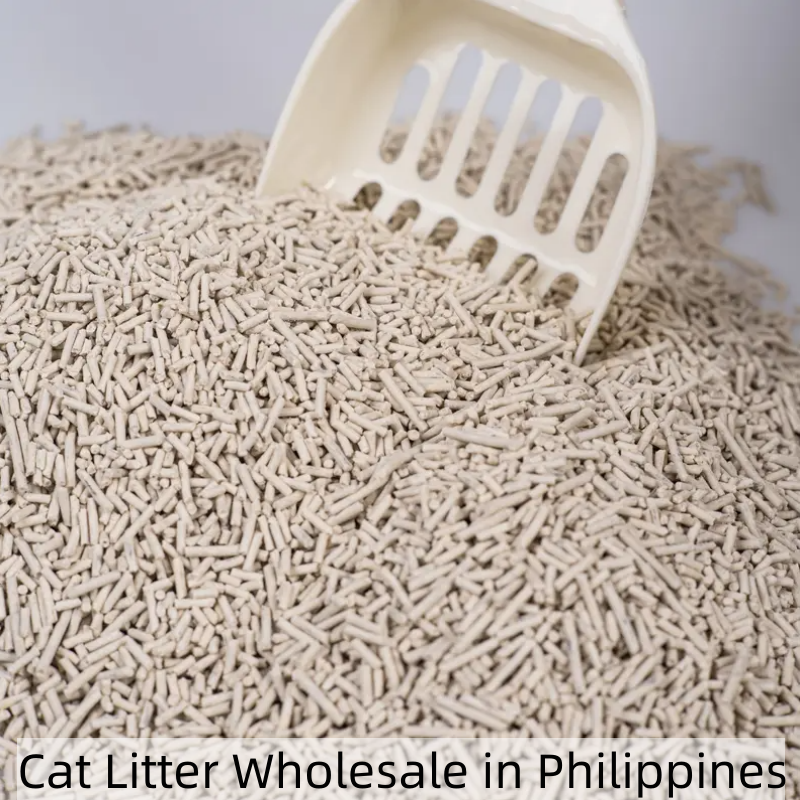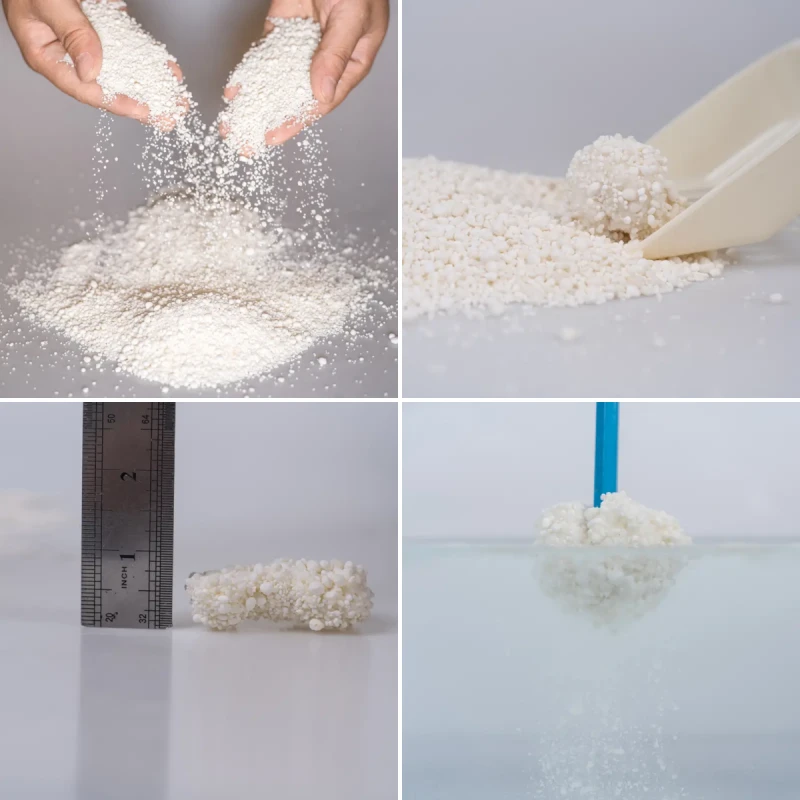Product Description
Health Monitoring Function for Early Disease Detection:
The pH health indicator feature monitors the acidity and alkalinity of your cat's urine through color changes, helping cat owners detect urinary abnormalities early and identify potential health issues such as urinary tract infections or other urinary system diseases. This adds an extra layer of protection for your cat's health and reduces the risk of delayed treatment.
Eco-Friendly and Sustainable:
This cat litter is made from natural tofu residue, is biodegradable, and does not cause environmental pollution. It is an ideal choice for environmentalists and aligns with the current trend of green consumption. Compared to traditional clay cat litters, it is more sustainable.
Dust-Free Design:
Manufactured with fine craftsmanship, the particles are solid and do not produce dust, reducing the risk of your cat inhaling dust and protecting its respiratory health.
Rapid Clumping:
Tofu cat litter quickly forms solid clumps upon contact with liquid, making cleaning easier and preventing liquid from seeping to the bottom of the litter box, keeping it clean and dry.
Summary:
pH Health Monitoring Tofu Cat Litter excels not only in its eco-friendliness, dust-free nature, and rapid clumping abilities but also offers added value through its unique health monitoring feature. This innovative cat litter cares for your cat's health and provides significant convenience for owners, making it a high-quality pet product with multiple advantages.
Why Choose pH Health Indicator Tofu Cat Litter?
Choosing this product means you prioritize both your cat's health and the environment. Traditional cat litters often contribute to landfill waste and may contain harmful chemicals. In contrast, our tofu cat litter is biodegradable and free of chemical additives, offering a sustainable solution without compromising on performance. The added pH indicator feature further sets it apart, allowing you to monitor your cat's health with peace of mind every time you use it.
pH Health Monitoring Cat Litter Functionality
Application of pH Indicators:

pH Health Monitoring Tofu Cat Litter contains specific pH indicators that are highly sensitive to acidity and alkalinity. When the cat's urine comes into contact with the litter, the indicators change color according to the pH level of the urine. Normally, healthy cat urine is slightly acidic, so the litter will remain yellow (no color change). If the cat's urine has an abnormal pH, the litter will change to blue or deep purple, indicating that the urine may be too alkaline.
Early Warning Function:
The color change allows cat owners to visually monitor changes in their cat's urine pH. If the litter color remains abnormal for 24 to 48 hours, it may suggest a health issue in the cat's urinary system, such as a urinary tract infection, stones, or other metabolic diseases. In such cases, cat owners should promptly take their cat to the vet for further examination and treatment.
Safety and Reliability:
This pH monitoring function is achieved in a non-toxic, harmless manner, ensuring that it does not pose any negative effects to the cat or the environment. The natural components of the tofu cat litter guarantee its safety for the cat, while the color change of the indicators is purely visual and does not release any harmful substances.
Causes, Risks, and Prevention of High Urine pH in Cats
1. Causes:
A high urine pH in cats generally indicates that the urine is alkaline. Normally, a cat’s urine should be slightly acidic, with a pH value typically ranging from 6.0 to 7.5. Causes of elevated urine pH may include:
Dietary Factors:
Diets high in carbohydrates or plant-based proteins can increase urine alkalinity. Some commercial cat foods may contain excessive alkaline components, such as grains or vegetables.
Dehydration:
Inadequate water intake can concentrate urine, potentially affecting the pH level.
Urinary Tract Infections (UTI):
Bacterial infections can raise urine alkalinity, particularly certain types of bacteria that produce urease, an enzyme that breaks down urea and generates alkaline substances.
Chronic Kidney Disease:
Impaired kidney function may prevent effective excretion of acidic substances, leading to increased urine alkalinity.
Medication Effects:
Some medications can affect the acid-base balance in cats, resulting in higher urine pH.
2. Risks:
A high urine pH can pose several health risks for cats:
Urinary Stones:
Alkaline urine promotes the formation of certain types of stones, particularly struvite stones. These stones can obstruct the urinary tract, causing difficulties or complete blockage of urination, which can be life-threatening.
Urinary Tract Infections:
An alkaline environment is more conducive to bacterial growth, making cats more susceptible to urinary tract infections, which can cause symptoms such as frequent urination, difficulty urinating, and blood in the urine.
Kidney Damage:
Persistent pH abnormalities can exacerbate kidney burden, potentially worsening chronic kidney disease.
3. Prevention Measures:
To prevent high urine pH in cats, owners can take the following steps:
Adjust Diet:
Choose high-quality, low-carbohydrate, and high-animal-protein cat food to help maintain a healthy urine pH. There are also prescription diets specifically designed to prevent urinary issues, containing ingredients that regulate urine pH.
Increase Water Intake:
Ensure that your cat has ample access to water to dilute the urine and help maintain normal pH levels. Adding wet food or using a pet water fountain can increase your cat’s water intake.
Regular Check-ups:
Schedule regular veterinary visits, including urine analysis, to detect pH abnormalities early and take appropriate action.
Manage Stress:
Stress can impact overall health and urine pH. Providing a stable and comfortable environment, and minimizing stressors, can help maintain your cat’s health.
Use pH Monitoring Cat Litter:
Employing pH health monitoring tofu cat litter can help owners keep track of their cat’s urine pH in real-time, enabling early detection of potential issues and prompt intervention.
Summary:
High urine pH in cats can result from various factors and pose risks such as urinary stones and infections. By adjusting diet, increasing water intake, conducting regular check-ups, managing stress, and using pH monitoring cat litter, cat owners can effectively prevent abnormal urine pH and ensure their cat’s urinary health.

387.webp)



122.webp)






